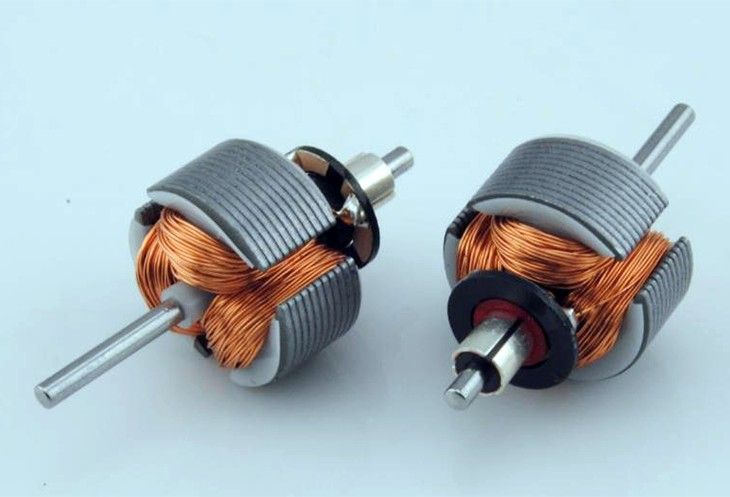Trong thiết bị điện tăng cường an toàn, chẳng hạn như động cơ chống cháy nổ, máy biến áp, dây điện từ, và chấn lưu cho đèn huỳnh quang, một phần bao gồm cuộn dây bên trong. Yêu cầu đối với các cuộn dây này, cả về cơ khí và điện, cao hơn so với cuộn dây tiêu chuẩn.

Nói chung là, dây cách điện dùng để quấn các cuộn dây này phải được cách điện kép, và đường kính định mức của cuộn dây không được nhỏ hơn 0,25mm.
Đối với dây tráng men dùng để quấn các cuộn dây này, nên sử dụng GB/T6109.2-2008 “Dây đồng tròn tráng men Polyester, Lớp 155,” GB/T 6109.5-2008 “Dây đồng tròn tráng men polyester-imide, Lớp 180,” GB/T 6109.6-2008 “Dây đồng tròn tráng men Polyimide, Lớp 220,” hoặc GB/T6109.20-2008 “Dây đồng tròn tráng men bằng nhựa tổng hợp Polyamide-imide hoặc Polyester-imide, Lớp 220.”
Ngoài ra, Cấp 1 Có thể sử dụng dây đồng tròn tráng men quy định trong tiêu chuẩn này, miễn là nó vượt qua các bài kiểm tra liên quan được nêu trong tiêu chuẩn.
Sau khi cuộn dây, nên sử dụng chất ngâm tẩm thích hợp để tăng cường tính chất cách điện của cuộn dây.
Quá trình ngâm tẩm phải tuân theo phương pháp quy định của nhà sản xuất, sử dụng các kỹ thuật như nhúng, nhỏ giọt, hoặc ngâm tẩm áp suất chân không (VPI) để lấp đầy khoảng trống giữa các dây quấn và đảm bảo độ bám dính chắc chắn. Nếu chất ngâm tẩm có chứa dung môi, việc ngâm tẩm và sấy khô phải được thực hiện hai lần để dung môi bay hơi.
Nói chung là, các phương pháp như phun hoặc phủ cuộn dây cách điện được coi là không đáng tin cậy đối với thiết bị điện chống cháy nổ. Cần có sự quan tâm đầy đủ đến vấn đề này trong thực hành kỹ thuật.
Hơn thế nữa, cho cuộn dây điện áp cao, các cuộn dây đã tẩm phải được xử lý bằng sơn chống hào quang để ngăn ngừa các mối nguy hiểm bổ sung do phóng điện hào quang gây ra.
Trong các thiết bị điện tăng cường an toàn, liệu động cơ, cuộn dây điện từ, hoặc cuộn dây của thiết bị khác, nói chung họ nên được trang bị nhiệt độ thiết bị bảo vệ để ngăn chặn nhiệt độ vượt quá giới hạn trong điều kiện hoạt động bình thường hoặc các điều kiện bất thường được nhận biết.
Nếu cuộn dây không vượt quá nhiệt độ giới hạn khi quá tải liên tục (chẳng hạn như khóa rôto động cơ), hoặc nếu cuộn dây không bị quá tải (giống như chấn lưu cho đèn huỳnh quang), sau đó nó không cần thiết bị bảo vệ nhiệt độ.
Khi thiết bị điện tăng cường an toàn được trang bị thiết bị bảo vệ nhiệt độ, những thứ này có thể được cài đặt bên trong hoặc bên ngoài. Bất kể, thiết bị bảo vệ phải có biện pháp thích hợp loại chống cháy nổ và cần được đánh giá cùng với thiết bị được bảo vệ.
 Chống cháy nổ Shenhai
Chống cháy nổ Shenhai
